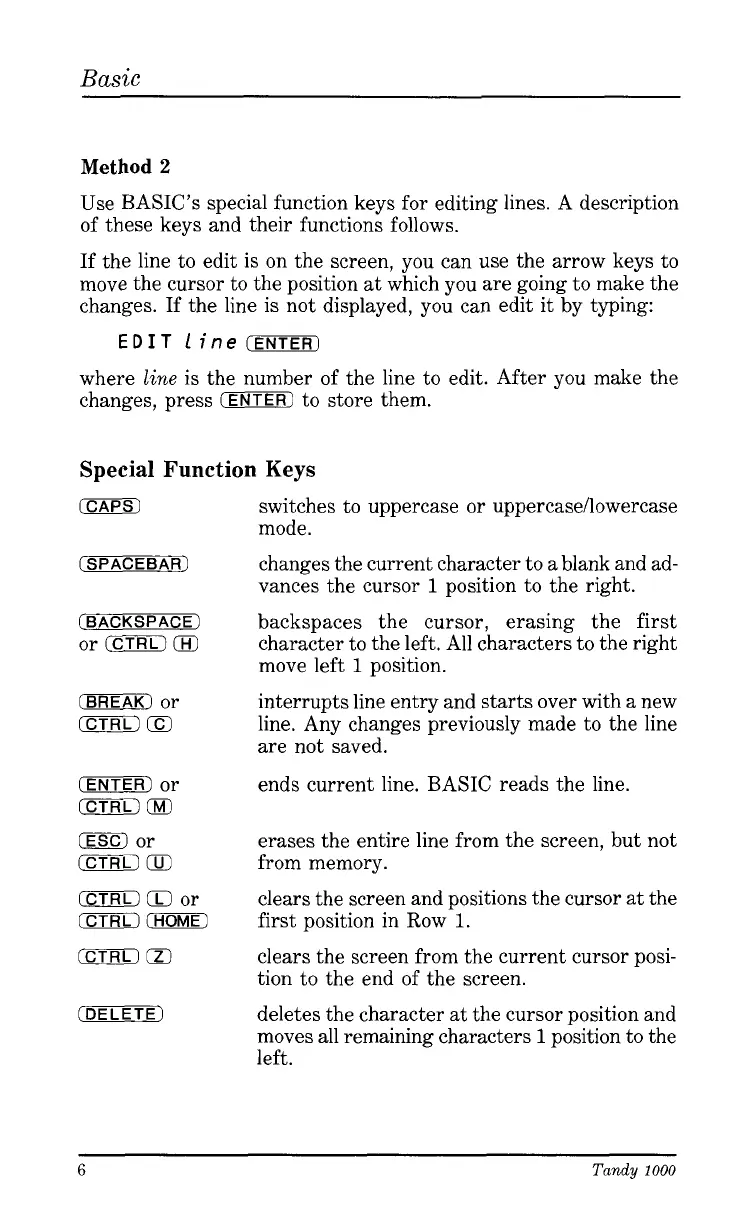Basic
Method
2
Use BASIC’s special function keys for editing lines. A description
of these keys and their functions follows.
If
the line to edit is
on
the screen, you can use the arrow keys to
move the cursor to the position at which you are going to make the
changes. If the line
is
not displayed, you can edit
it
by typing:
EDIT
line(-)
where
line
is the number of the line to edit. After you make the
changes, press
(ENTER)
to store them.
Special
Function
Keys
[CAPS)
switches to uppercase or uppereasellowercase
mode.
(SPACEBAR)
changes the current character to a blank and ad-
vances the cursor
1
position to the right.
(BACKSPACE)
backspaces the cursor, erasing the first
or
(CTFKl
Q
character to the left. All characters to the right
move left
1
position.
(BREAK]
or interrupts line entry and starts over with a new
(CTRLI
a
line. Any changes previously made to the line
are not saved.
[ENTER)
or ends current line. BASIC reads the line.
(CTRC)
m
0
or erases the entire line from the screen, but not
CCTRLl
Q
from memory.
(CTRL)
Q
or clears the screen and positions the cursor at the
(CTRLI
(HOME1
first position in Row
1.
r-1
Q
clears the screen from the current cursor posi-
tion to the end of the screen.
(DE L ET
E)
deletes the character at the cursor position and
moves all remaining characters
1
position to the
left.
6
Tandy
1000
